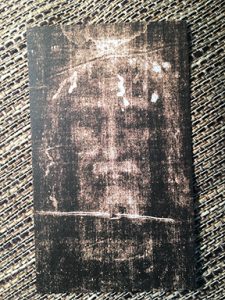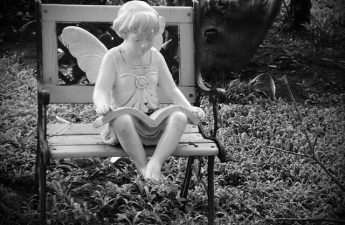 We’ve posted about lectio divina here and here. There’s also visio divina (“divine seeing” or “sacred seeing”).
We’ve posted about lectio divina here and here. There’s also visio divina (“divine seeing” or “sacred seeing”).
What is that exactly? It involves gazing at an icon, work of art, photo, or similar in order to get spiritual feedback. Some practitioners who have done lectio divina in the past are then interested in visio divina. One site said that “lectio divina was the foretaste of visio divina.” Another called visio “lectio’s visual cousin.” An occult website says visio divina is “a sacred gateway to the divine.”
Christian-type sites may connect visio divina to contemplative prayer and spiritual formation, referencing teachers like Richard Rohr and Henri Nouwen. (You can read more on those topics/names on this site; do some research on the theology behind them.) Some instructional materials for visio do include Scripture verses, but …
What happens?
- One promoter says that visio divina “uses our vision and an image instead of scripture to listen to God.” And that whatever in the image has drawn (or keeps drawing) your attention “is God inviting you to a treasure meant just for you.”
- Another source instructs us to make ourselves “present to an image” and then “allow it to speak to us in words or wordlessly with a divine voice.” The image doesn’t have to be religious; just consider, “Does it vibrate with energy for you?” And by way of this experience, we are “saying yes to God’s transformational presence.”
- One source instructs, “Ask God to speak to you through this image.” Another explains that we’re praying with images “to listen to God’s words.”
- Some promoters don’t limit communication as coming from the Lord Almighty. Rather, “Ask the Divine for insight” … “trust the Divine to lead your eyes.”
What images are being used?
- An interspiritual (that is, mixing world religions) site invites believers of various “traditions” to experience visio divina. Sample images include Mary, a buddha, an angel, an ancient Roman mask …
- But a Christian site (Episcopal) wasn’t much different. Its collection of art ideas includes a mandala, a designer jacket, a Catholic saint, Native American items, a female bishop, majestic mountains …
- One Catholic church hosted “A Walk with Mary” to reflect on 30 artworks of Mary. (So-called sacred walks, pilgrimages, or rosary processions are sometimes called walking divina.) Whether these artworks of Mary would be considered “icons,” I’m not sure. But a Catholic priest explained that icons are “not just art but sacramentals.” And that sacramentals supposedly “prepare us to receive grace and dispose us to cooperate with it.” Similar walks with Mary were advertised at other Catholic churches. One seemed to be associating Psalm 32:8: “I will … show you the way you should walk” (NAB version).
 A collection of art pieces offered on Pinterest said that visio divina “invites us to be seen, addressed, surprised, and transformed by God.” And that God “is never limited or tied to any image, but speaks through them.” Suggested artwork included photos of the Taj Mahal, lemons on a quilt, a cute bear in a canoe, Disney characters, a treehouse, the Shroud of Turin face … (Interestingly, I was just handed a card with that Shroud of Turin face, distributed by a local Catholic church. The back of the card provides a “Prayer to the Holy Face of Jesus.” Sample line: “Holy Face of Jesus, saddened by sorrow, Grant my requests through your merits.” Couldn’t help wondering … If I prayed without the card, would I address Jesus as only a “face”?)
A collection of art pieces offered on Pinterest said that visio divina “invites us to be seen, addressed, surprised, and transformed by God.” And that God “is never limited or tied to any image, but speaks through them.” Suggested artwork included photos of the Taj Mahal, lemons on a quilt, a cute bear in a canoe, Disney characters, a treehouse, the Shroud of Turin face … (Interestingly, I was just handed a card with that Shroud of Turin face, distributed by a local Catholic church. The back of the card provides a “Prayer to the Holy Face of Jesus.” Sample line: “Holy Face of Jesus, saddened by sorrow, Grant my requests through your merits.” Couldn’t help wondering … If I prayed without the card, would I address Jesus as only a “face”?)- DaVinci’s The Last Supper art seems popular.
- A woman teaching her own version of visio divina actually suggested that practitioners clear their minds and—rather than focusing on predetermined images—each draw random sketches to accompany various thoughts that come to mind. (This is actually more like the occult practice of automatic writing.) Later each person is to pull inspiration from his sketches and create a single piece of art.
What we really have here is not divina but old-fashioned divination.
- Think of the practice of gazing into a candle (“trataka,” originating in Hinduism?). Some say that candle gazing merely helps concentration or even depression, but it’s also touted as a way to have a vision, see the future. There are variations of the practice. (And—what luck!—there are candles sold for this purpose, including a “gazing buddha soy candle” … in assorted colors.)
- Then there’s crystal gazing, which most of us have an idea of. (Think crystal balls.)
- Related is scrying, which Encyclopedia Britannica describes as divination dating from ancient times. The idea there is to look into a crystal or, more likely, into a reflection in water or polished metal for “vision.” An occult website agrees with Britannica and describes scrying as divination and that it’s “looking at an object to receive a message or vision … to ‘see deeper.’”
- Let’s not forget mirror magic. One occult site promoting this instructed: “Adore yourself as sacred art.” (Remember the old fairy-tale line, “Mirror, Mirror, on the wall …”?) Assorted occult books describe mirror magic as a way to heal (or curse), discern information, unlock self-awareness/self-love, and more.
- All of those have similarities to psychometry—the practice of holding an item that belongs to someone else and supposedly discerning information about the person.
- Perhaps we’ll leave for another time the practice of Buddhist monks staring at a decomposing body in order to perceive the fact that—(wait for it)—our bodies are impermanent.
Do you see? The adopting of occult/world religion practices, then remixing and trying to Christianize them? Or possibly this practice seems attractive in the sense of having no accountability, making things easy on ourselves? God stopped Moses in his tracks and assigned him to do something frighteningly difficult, but is it likely that art of lemons on a quilt will point us to go take on danger?
No matter. Deuteronomy 18:10 forbids divination or sorcery. In Acts 16:16-19 the slave girl who “divined” did that via a dark spirit; her power left when Paul ordered the spirit away. Jeremiah 29:8 disavows diviners. Ezekiel 13 (though about a specific context/scenario) has application regarding divination and pulling info from one’s own thoughts/imagination.
Anything we see (or smell, hear, taste, touch) throughout the day might trigger a memory, present an example, evoke gratitude, create wonder, reflect something from Scripture, boost confidence, highlight a failure, bring a smile or tear … Of course. That’s normal. But not the same thing at all as deciding that the Lord should/will/must speak to us (and mostly soothe us?) at whatever moment we determine is convenient for us to sit and stare at a picture—whether it’s a picture of Mary, the Taj Mahal, or a cute bear in a canoe.


